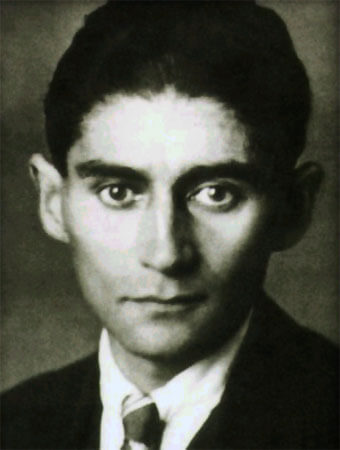Insects have eyes with 2,000 lenses. The Incarnation story is about a man who became a cockroach, a typical Kafkaesque story with an unencouraging ending, but with a touch of the science fiction genre

On the same subject:
Today, July 3, is the 130th birthday of the Jewish-Czech writer Franz Kafka.
In most of Kafka's stories, the heroes encounter unimaginable bureaucracy. But in one story the hero encountered problems of a completely different kind, The Incarnation (Die Verwandlung or metamorphosis in Latin languages) written in 1912 and published in the midst of the First World War - in 1915 in the German language. It's actually a science fiction story where the hero, Gregor, becomes a cockroach and has to deal with what happens after his disappearance (at least in the eyes of his family).
According to Wikipedia, the story consists of three chapters. In each chapter, there is an attempt by the hero, Grigor Samsa, after turning into an insect (probably a cockroach or cockroach), to get out of the room he is in and ends up being expelled back into it.
In the first episode, Grigor leaves the room when the official of the company he works for comes to check why he is late for work, meets Grigor in his insect form and tries to escape from the house. Grigor tries to stop his escape and the father pushes him back with a stick and a newspaper and slams the door.
In the second episode, Grigor leaves the room to see how his passed out mother is doing as his sister takes care of her in the next room. The mother fainted at the sight of Grigor clinging to the picture in a desperate attempt to stop the mother and daughter from emptying his room of all his favorite furniture. The expulsion in this case is more violent than the previous expulsion: the father takes Gregor to his room while throwing apples at him and injures him in a way that did not heal from him until his death about a month later.
In the last attempt that appears in the third episode, Grigor sneaks into the living room to hear his sister's music, but seeing the reactions of the family members who ignore him, he returns to his room with his last strength, this time the door is locked on him with a bolt, and Grigor, who knows that he has no choice but to disappear, blows his soul and frees his family excellent
This is the opportunity to find out some details about the cockroaches or in their popular name cockroaches. And especially how Gregor saw his room and the other rooms in the house that he entered for short periods of time, and of course the members of his family.
According to the websiteThe planet of the cockroaches".
How many times did Gregor Samsa see his family members and the furniture he loved in his room? Cockroaches' eyes are compound. This allows the roach to see everything that is happening around it so that it can defend itself against any harm. Complex vision is made possible by over 2,000 independent lenses. This is compared to one lens in each eye in mammals, including humans. The cockroaches' eyes are impressive. Cockroaches can't see anything in red light. More anatomical facts: cockroaches have an exoskeleton; Six legs, tentacles that help them navigate their way as motion sensors

One of the scenes in the movie "The Day After" that described the horrors of a nuclear holocaust that landed on the world is of the cockroach walking on one of the shelves in the shelter. "They will stay long after us" said one of the heroes in the film. Another feature that made the American cockroach famous is its resistance to radioactive radiation. While this claim has been proven to be true for various species of insects, it has been proven wrong for cockroaches - these are only slightly more resistant to radioactive radiation than humans.
about.com site Collected ten details about the cockroaches (to read the entire article). It turns out that the vast majority of the over 4,000 species of cockroaches are harmless and are not around humans.; . Cockroaches can eat almost anything, and can survive without food for long periods of time. Cockroaches have walked the earth for hundreds of millions of years. They protect their eggs by covering them with a protective substance, cockroaches also get their vitamins from the bacteria that live in their bodies. They can live for weeks without their heads. Cockroaches are very fast (up to 80 centimeters in one second); Cockroaches in the tropics are large - an Australian cockroach (longipennis) boasts an 18-centimeter wingspan, and in conclusion, cockroaches can be conditioned just like Pavlov's dogs.
More about cockroaches and insects on the knowledge site
Mind control is not a new thing in nature
The wasp that controls the cockroach's mind
Why are there no giant cockroaches?

One response
The book can be regarded as an allegory, a microcosm of society. How much society is willing to treat another and accept him as he is. It may be possible to do a comparative study with other literary works, including science fiction books that describe society's attitude towards others.